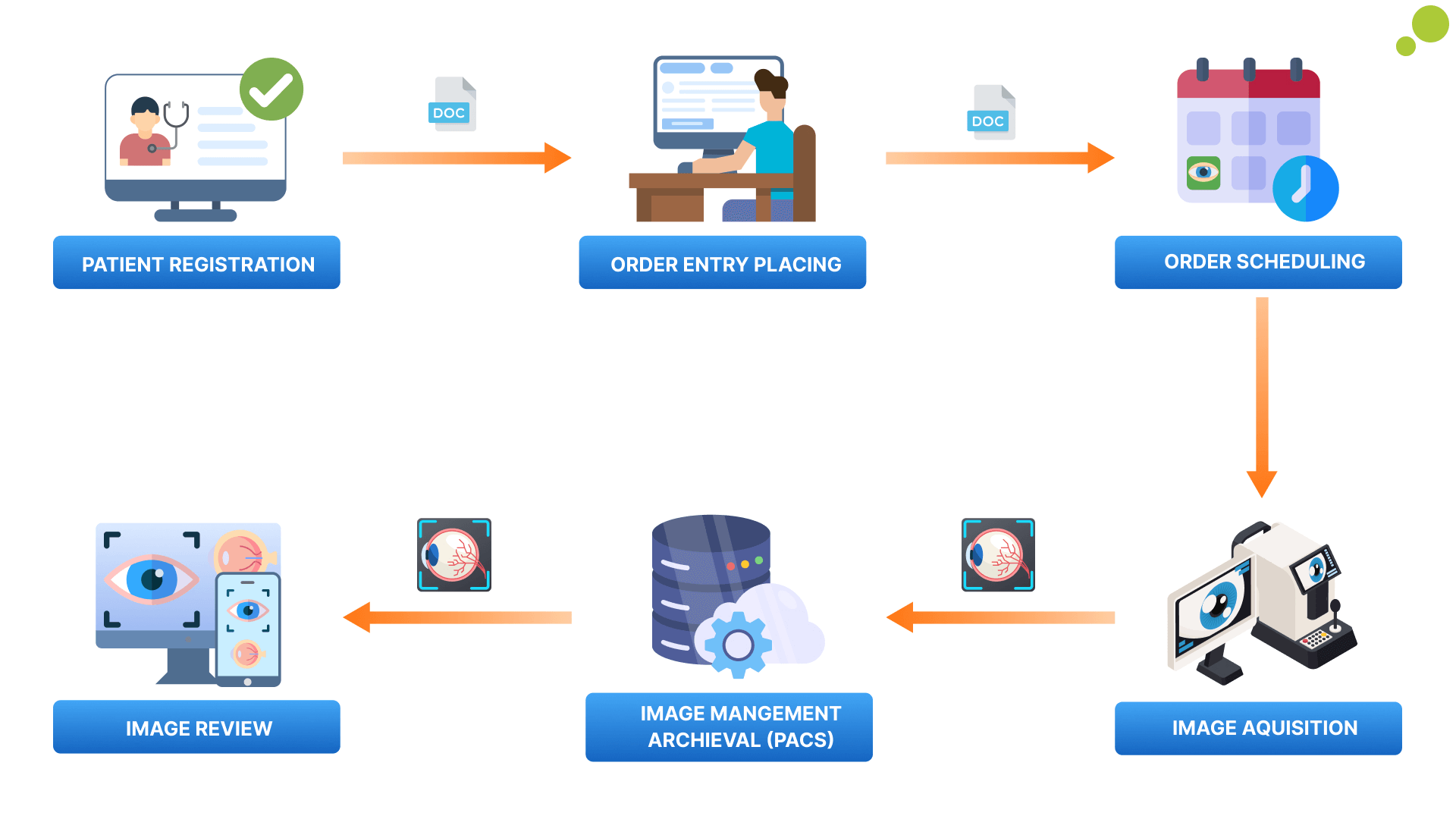Overview
The US-based client is an esteemed ophthalmologist with an illustrious professional history spanning more than 20 years. As his healthcare practice's founder and leading ophthalmologist, he has committed to delivering comprehensive eye care services. The client is currently using one EHR system, but it is quite off the shelf because it lacks some advanced features. Features like Image Management with DICOM and Accurate Surgical planning sheets. Due to the lack of these features, the client started facing the challenge of storage and retrieval of medical images and the need for a streamlined process to prepare surgical planning notes with greater accuracy.
To overcome these challenges, the client reached out to Thinkitive for the custom EHR software development with all incorporated advanced features.
Business challenges
1. Lack of DICOM Image Management:
The current off-the-shelf EHR system lacks the ability to store, manage, and retrieve medical images in the DICOM format.
DICOM (Digital Imaging and Communications in Medicine) is the standard for storing and sharing medical images. Without this capability, the client faced:
- Inefficient image storage and retrieval
- Limited collaboration
2. Absence of Surgical Planning Tools:
The existing system lacked features specifically designed for streamlining surgical planning, leading to:
-
Manual Note Creation:
Creating surgical planning notes outside the EHR system was time-consuming and error-prone
-
Inconsistent Format:
Lack of standardized templates could lead to incomplete or inaccurate information, potentially impacting patient care.

Solution
1. DICOM Server Integration:
Integrate a DICOM server into the new EHR system to enable:
-
Image Capture:
Integrate with ophthalmic imaging equipment like fundus cameras, OCT scanners, and visual field analyzers to capture images directly into the EHR.
-
Image Storage:
Securely store DICOM images within the EHR system, ensuring data integrity and compliance with HIPAA regulations.
-
Image Retrieval:
Efficiently search, retrieve, and view DICOM images within the EHR based on patient information, date, or other relevant criteria.
-
Image Sharing:
Securely share DICOM images with colleagues, referring physicians, and other relevant healthcare providers using standard protocols.
2. Surgical Planning Tools:
-
Customizable Templates:
The EHR system included customizable templates for surgical planning notes, ensuring consistency and completeness of information.
-
Integration with Pre-Operative Data:
The system integrates pre-operative data sources like lab results and imaging reports, providing a comprehensive overview of surgical planning.
-
Collaboration Features:
The platform offered features like annotations, comments, and chat functionality for collaborating with colleagues on surgical plans.
Value Delivered
-
Reduced Image Management Time:
Streamlined image capture, storage, retrieval, and sharing, eliminated manual processes, saving 20% of staff time previously spent handling images outside the EHR.
-
30% Reduction in Time Spent Creating Surgical Notes:
Customizable templates and pre-populated data from other sources streamlined the note-taking process, saving valuable time.
-
15% Decrease in Errors in Surgical Plans:
Consistent and standardized templates ensured completeness and accuracy of information, potentially reducing the risk of errors and improving patient safety.
